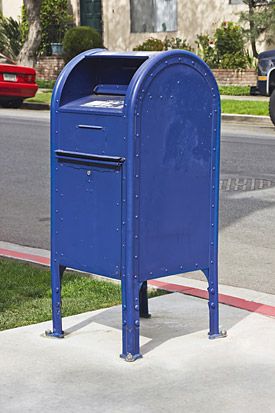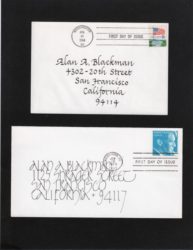National Postal Worker’s Day was July 1, which seemed like a good time to check out what’s in your mail.

As people have moved from doing business through the mail to electronic communications, first class mail has declined. Banking, including bill paying, and personal communications have largely moved online. Only occasionally do I receive handwritten notes, cards, letters, or postcards, and I suspect that I am not alone. Even event invitations are conveyed electronically, through sites that track responses (RSVPs) and comments from invitees.
Since 1926, the USPS has tracked mail volume by type of mail. In 1926 the volume of first-class mail was 15.2 million pieces. The highest decade year since then was 2000, when 103.5 pieces of first-class mail were handled through the USPS. Not surprisingly, mail volume declined during the pandemic, going from 52.6 million pieces in 2020 to 48.9 million pieces in 2022.
In honor of the dedicated mail carriers who trek through rain, snow, extreme heat, and more recently, smoke, and all of us, the letter writers and recipients, I invited a handful of friends to track their mail, starting on July 1, and reveal, generically, what they received. While not scientifically accurate by any stretch, the results nonetheless were quite interesting.
The survey included six respondents over a period of five days, excluding the July 4 holiday. Most are local (San Francisco Bay Area), with a couple from out-of-state, and the average mailbox included between 20 -35 pieces of mail in a week.
By comparison, my own mail looks not only slim but downright dull, at least in the survey week! Each person’s mail revealed much about their interests and character. For privacy, the survey is tallied to include only very broad categories of mail, without specifics as to the who or what.
The most often delivered pieces of mail were solicitations from non-profits and charities, including acknowledgements of donations. This category included “free” and unsolicited gifts, such as calendars or note cards. Six households received a total of 30 pieces of mail in this category. The results are likely skewed by one household that gets hit up often for donations to charitable causes, but it also reflects on the generosity of these friends.
Next up, no surprise here: ads and for-profit solicitations. These included airline ads, cruise solicitations, and cards for real estate, vitamins, windows, closet organizers, and even tires. Annoying as they may be, ads in the mail generate needed revenue for the USPS.
Magazines and newsletters were also near the top of the list, with 23 items delivered. News, people-oriented, and fashion magazines remain popular, as well as book reviews. Among my west coast friends, The New Yorker seems to have a large audience. I personally subscribe to Library Journal, Bay Nature, and ZYZZYVA, a literary journal.
Personal letters and cards stayed in the top tier at 18 items, but only thanks to one friend who received 12 birthday cards in the mail during the survey week. This was a good reminder of how special it is to reach out by mail on important occasions.
Some mid-list pieces of mail included brochures for arts organizations, such as museums, music performances, theater, and travel (11) and catalogs (11), another form of for-profit solicitations. Others (15) were financial-related, bills, checks, and statements. More infrequent mail included books and other products, political solicitations, and government notices (e.g., notice of public hearing).
Phone calls, e-mails, and text messages are all very important ways to communicate and stay in touch with our friends and loved ones. But we can do better in supporting our U.S. Postal Service, by sending more personal notes and letters in the mail. They are not hard to write and a joy to receive, as well as a valued service to keep our postal service solvent and available for generations to come.
Many thanks to the following people who supported this totally unscientific survey: Ann, Ellen, Katharine, Kay, Leland, Lorna, and Nancy. And special thanks to Susan, who suggested the idea for this post.
And thanks to my readers, who waited patiently during my long absence from writing yet were still there to support me by opening and reading my most recent blog.
What’s in your mail? Curious minds want to know.




